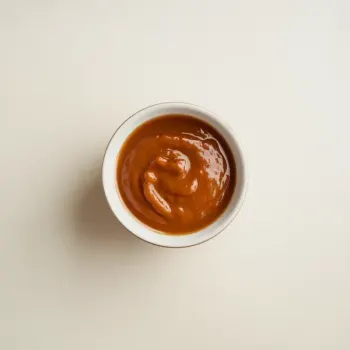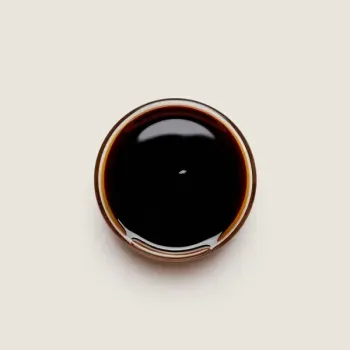Hoisin Sauce and Soy Sauce are distinct Asian condiments; Hoisin is thick, sweet, and fragrant, ideal for glazes and dips, while Soy Sauce is salty, umami-rich, and versatile, used in marinades, stir-fries, and as seasoning.

Hoisin Sauce is a thick, fragrant sauce commonly used in Chinese cuisine. It's typically made from a combination of soybeans, garlic, chilies, and various spices. Its sweet and salty taste makes it perfect for glazes, dipping sauces, and as a flavorful addition to stir-fries.

Soy Sauce is a liquid condiment made from fermented soybeans, wheat, salt, and water. It has a salty, umami-rich flavor and is used across various Asian cuisines as a seasoning, marinade, and dipping sauce.
Hoisin Sauce is typically thicker, sweeter, and more complex in flavor, with hints of garlic and various spices. Soy Sauce, on the other hand, is thinner, saltier, and more versatile, with a strong umami flavor. While Hoisin Sauce is often used as a glaze or dipping sauce, Soy Sauce is a more universal seasoning that enhances the savory taste of dishes.

Your ultimate Recipe Box, Meal Planner, and Cooking Class all in one
Best used in dishes like Moo Shu Pork or Kung Pao Chicken, Hoisin Sauce adds a sweet and tangy flavor. It creates a glossy coating on ingredients, delivering depth and richness. Use sparingly to avoid overpowering the dish. Ideal for a wide range of stir-fries, from Beef and Broccoli to Tofu Stir-Fry. Soy Sauce infuses the dish with umami and a balanced saltiness. It's perfect for seasoning layers of flavor throughout the cooking process.
Great for marinades in recipes like Char Siu (Chinese BBQ Pork) where its sweet and aromatic profile can penetrate and tenderize the meat. Combine with other ingredients to balance the sweetness. A versatile marinade base for meats, seafood, and vegetables. It works well in recipes like Teriyaki Chicken or Soy-Glazed Salmon, enhancing the natural flavors without overwhelming them.
Perfect as a standalone dip for spring rolls or Peking duck, Hoisin Sauce provides a sweet and tangy dip that complements the freshness of the ingredients. Soy Sauce can be mixed with vinegar, sesame oil, or chili for a versatile dipping sauce suitable for dumplings, sushi, or a simple potsticker dip.
Both Hoisin Sauce and Soy Sauce contain soy as a primary ingredient, but their nutritional content differs due to the additional components in Hoisin Sauce.
| Nutrient | Soy Sauce ( per Tablespoon ) | Hoisin Sauce ( per Tablespoon ) |
|---|---|---|
| Fat | 0g | 0.5g |
| Sodium | 879mg | 258mg |
| Protein | 1g | 0.5g |
| Calories | 8 | 35 |
| Carbohydrates | 1g | 7g |
You can, but expect a sweeter taste and a thicker consistency. It's recommended to dilute Hoisin Sauce with water for a closer match.
Hoisin Sauce can have a mild spice due to the addition of chilies, but it's primarily sweet, whereas Soy Sauce does not have a spicy flavor.
Soy Sauce alone cannot achieve the same glaze due to its thinner consistency, but it can be mixed with sugar and cornstarch to mimic the effect.
Yes, gluten-free versions of both sauces are available, made without wheat as an ingredient.
Consider the desired flavor outcome; use Hoisin for a sweet and tangy touch, or Soy Sauce for savory umami depth.